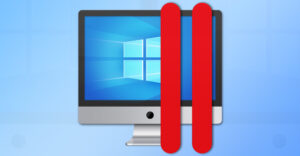The software development industry is gearing up for post-pandemic activity. But developers will no doubt find that the race to release will likely fall flat if they do not consider meaningful metrics in their implementation.
The most important consideration for successful implementations and launches is using smart, accurate, and effective metrics, says Aurimas Adomavicius, co-founder and president of Devbridge, a global digital products consultancy.
Sustainable software is driven by product metrics, but it must be adopted across the entire enterprise. Effective metrics provide a point of comparison for the business and become behavior-changing in how decisions are made, he explained. Organizational adoption of metrics provides a common measurement across teams and initiatives to drive larger portfolio decisions.
Adomavicius is experienced in developing effective software products for several Fortune 500 companies. His mantra is getting software developers to understand the importance of using correct and accurate metrics when developing sustainable products.
He founded Devbridge, a Chicago-based tech consultancy, at age 27 and has grown the company to five hundred employees across five global offices.
Aurimas won Ernst & Young’s “Entrepreneur of the Year” award in 2018 and has been featured in Entrepreneur, Raconteur, Forbes, and other publications. He is the author of “The Secret Source: The Culture, Skills, and Process for Making Great Digital Products.”
TechNewsWorld spoke with Adomavicius to pursue the concept of how software developers can put meaningful metrics to work.
TechNewsWorld: How has the pandemic changed the perception or use of product metrics?
Aurimas Adomavicius: The question may be more about the growth or metrics as an indicator. I don’t know that anything really has dramatically changed, with the exception that during the pandemic, many organizations very quickly realized what the gaps in their implementation are. Most of those gaps really are around self-service for customers and enablement of customer experience.
So the pandemic had no influence on software development?
Adomavicius: For internal workers, there was a big gap because the moment that people were sent to work from home, many companies realized that much of the underpinning technology they have for product software in many ways falls short in enabling a distributed workforce. With most people now coming back. I suppose conditions are returning to normal.
How did this shift impact the software industry?
Adomavicius: Most services take place online as opposed to people using brick-and-mortar locations. Businesses needed to accelerate the way they build technologies and software.
We have seen business growth of over 30 percent over 2020. On that same vector in 2021, you are going to grow at a pretty rapid clip. I think it is going to continue going up. The pandemic has been an accelerant in a way of how businesses are creating the necessary tools, their employees, as well as the software and experiences.
So from a software developer’s point of view, developers need to be tuned in when we talk about metrics. We really need to think about that.
How exactly do metrics figure into software implementation?
Adomavicius: First, we need to establish what a good metric is. We usually quantify them in the context of their being specific, measurable, and achievable. So those three conditions must be present for any set of metrics.
With metrics and product metrics, we do not really want to include just developers. Product development is a combination of roles. You have software development itself. With software developers, you also have product designers and product managers. So typically, the three different types make cross-functional product teams. You need to really cover a wide spectrum of things that matter in a product, and so the three sets are the three big categories.
How do those metric sets interrelate?
Adomavicius: There are product expense metrics and delivery metrics. The idea is that quality metrics look at the quality of the sustainability of the product. Product metrics look at the business objectives and outcomes that the product is supposed to drive. For example, if you have a piece of software that is used for scheduling and shipping, your business around that software product should be able to schedule in any given day, trending over time, and so on.

Quality metrics could be anything from monitoring defects for acceptable defects to severe defects. There is more to quality than just scratching the surface. With delivery metrics, you look at the success of using an agile delivery methodology.
Metrics can consider factors like velocity and burndown, or backlog health, and many others. When we look at overall software development, we must establish a set of metrics for any given product or product team.
We look across those three categories, and then we monitor the ones that are the most important for a particular product.
Are any of the categories more significant to the successful adoption of the software project?
Adomavicius: Product metrics are probably the closest or good option. One of your product metrics could be something like concurrent users in the system actively using a product over time. Adoption rates could actually be one of your product metrics. But we need to look at them holistically. We always like to look at it as a framework of metrics.
Having the right set of metrics for the product team is so important. Adoption should be part of the metric system. That will allow the team to perform and observe those metrics as they design the product and think about the features that are most beneficial.
You often talk about the role of personal bias that can affect what goes on with software development. Explain that notion.
Adomavicius: With bias in general, every single person is biased. When we think about products, it is very likely that we have multiple audiences in saying what the product is going to be. For instance, software development companies deal with seniors, stakeholders, and executives. They mingle at planning sessions, contributing their perspectives on what the product needs to be.
Some of this perspective is based on anecdotal feedback that is being collected on the front lines of the business. Some of it is based on historical awareness of the industry. But the challenge is that when executives or stakeholders come in to help but display biases that are baked in based on the perspective that they have in business.
A good example would be when a senior stakeholder is really excited about a product notion that reflects a biased perspective asking for a particularly critical feature. Having product analytics baked into the software as it goes to market can very quickly assess how important that particular feature is to customers.
In response, you can provide a preview of a feature without necessarily developing that feature and then gauge the interest of the customer to use that feature before the investment is committed.
Many types of tests are possible to test the involvement of biases. Or developers can structure the product analytics that is implemented to guide and inform the team about items to refine.
We use continuous refinement analysis. This process should happen on a perpetual basis.
Is this software consultancy you are providing part of a new trend?
Adomavicius: I think historically, software was made by engineers. It is a technical field. It was created by engineers. Oftentimes, when software is released, it becomes exposed to points of friction where the software is designed from an engineer’s perspective but not from a user’s perspective.
This industry has started shifting away from purely engineering-driven. Software development into a product might have been happening for the last seven or eight years.
What is happening with the way a piece of software is being built involves using this metric methodology where the product is at the center, and user feedback is at the core of the team. We call this approach the build, measure, and learn loop.
As the meaningful metrics approach started gaining momentum, the methodology is getting more recognition in the industry. Some of the largest companies in the world, like Netflix and many others, are using this kind of product-centric methodology. The need for these services has grown dramatically. So it is really bringing the technology much closer into the fold.
Pandemic aside, what factors are impacting software development today that did not exist until the digital transformation?
Adomavicius: Things like predictive analytics and artificial intelligence, big data, and machine learning capabilities all enabled recognition of the need for change in software development.
The products that are being used to run corporations are incredibly outdated legacy pieces of software. The aging software is written in languages that are no longer supporting vulnerabilities. The result is a rise in hacking attacks and security breaches.
This kind of product-centric development can be applied to resolve a lot of that in these organizations. Hopefully, that will allow these companies to become leaner and do more work. The teams can be much more effective because of the improved technology. Or the teams can be quicker to make decisions with fewer mistakes and even make their work more enjoyable.
Does this concept of meaningful metrics work equally well with developers of proprietary and open-source products?
Adomavicius: It does not really matter because open source versus proprietary is still software technology. Maybe developers use different languages or frameworks. Those things really do not change why this needs to happen or how we venture out and run those businesses.
It does not really matter if intellectual property is baked into the product or if the underlying frameworks or coding languages are open source or not. If you look at the industry, you see Java or .Net. Most of those frameworks have been open-sourced. It really is about the results that can be driven for the businesses.




























































